
‘One of the most perfect films that I’ve ever seen runs a total of three minutes. Shot in 1966, Bruce Baillie’s All My Life opens on a pan of an old picket fence framed by the blue sky above and a stretch of summer-brown grass below. On the soundtrack, you can hear the crackle and hiss of an old record that’s soon filled with the sounds of Ella Fitzgerald singing “All My Life” in a 1936 session with the pianist Teddy Wilson.
‘In many respects, the image is perfectly ordinary, the kind that you chance on if you’re driving along, say, a California road, as Mr. Baillie was when he popped out of a car, seized by inspiration. Yet, as the camera continues to float left and Fitzgerald begins singing (“All my life/I’ve been waiting for you”), something magical — call it cinema — happens in the middle of the first verse. As the words “My wonderful one/I’ve begun” warm the soundtrack, a splash of red flowers on the fence suddenly appears, as if the film itself were offering you a garland.
‘Of course it’s Mr. Baillie (1931-2020) who, with artistry and sensitivity — to color, nature and a camera movement that unwinds like a scroll — found the precise moment to join that song with those flowers, a union that illuminates the sublime in the everyday. The film’s genesis, Mr. Baillie told the writer Scott MacDonald in 1989, was that Fitzgerald recording and “the quality of the light for three summer days” on a stretch of Northern California coast. After days of admiring the light’s beauty, Mr. Baillie said he decided, “No, I cannot turn my back on this!” By the final day, he had begun immortalizing that light with a camera, a roll of outdated Ansco film stock and a tripod.
‘Mr. Baillie started making his first film in 1960 (or, more specifically, “my first creative thing in film,” as he once said), the year that Jonas Mekas announced what he called “the New American Cinema.” Invoking both the French New Wave and the British Free Cinema movement, along with John Cassavetes and Robert Frank, Mr. Mekas asserted that Americans would be creating an author’s cinema as liberated and spontaneous as the art of a poet or painter. It would be, Mr. Mekas wrote, “art as an action and not as a status quo; art as various states of feeling and not as a series of facts, nature mortes or pastiches.” He was describing an ideal, one realized by the likes of Mr. Baillie.
‘Contrary to Mr. Mekas’s geographic claims (“the entire reaction against Hollywood, is to be found on the East Coast”), the West Coast had long been home to essential avant-garde filmmakers. Given this, perhaps it’s no surprise that an audience already existed in the Bay Area when Mr. Baillie began exhibiting his films on an Army surplus screen in his backyard. Calling it Canyon Cinema, after a nearby California town, this alt-enterprise grew and eventually morphed into one of the country’s most important distributors for avant-garde and experimental work. Some of the films in the retrospective carry the distinctive Canyon logo. (Mr. MacDonald’s 2008 book Canyon Cinema: The Life and Times of an Independent Film Distributor is its definitive history.)
‘Soon after he began making films, Mr. Baillie’s art showed a formal complexity that would only increase. By 1963, he was already working in a more poetic, associative register in To Parsifal, which begins with what sounds like excerpts from scratchy maritime radio transmissions (“Pacific Standard Time, west, southwest, 14, partly cloudy”), an abrasive opening for what emerges as a meditation on the American West. As Mr. Baillie shifts from amber hills to the cobalt ocean and lush green mountains — his fluid marshaling of image and sound suggests an epic journey, one that’s complicated by his use of “Parsifal,” the Wagner opera about an Arthurian knight’s quest for the holy grail. There’s grace and grandeur in a shot of men working on a mist-wreathed train track, but also a sense of how destiny becomes manifest.
‘You can scarcely see the place for the forms in the stunning Castro Street (1966), a densely textured, heavily manipulated film that finds abstract beauty in the railway yard, trains and heavy metal of an oil refinery off a street in Richmond, Calif. Using effects like tinting, negative printing, matting and, most strikingly, superimpositions — mesmerizingly, the different layers often move in opposite directions — Mr. Baillie creates a film that represents less the world as it seems to exist than one that’s been refracted through his being. As he pours on the color, mixes in the chugs and clangs, evokes the Brothers Lumière and swings between the figurative and the abstract, the line between place and head space dissolves and a portrait of the artist emerges — brilliantly.’ — Manhola Dargis
___
Stills



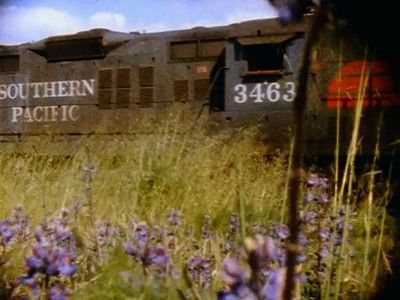

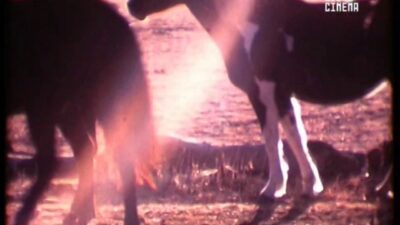
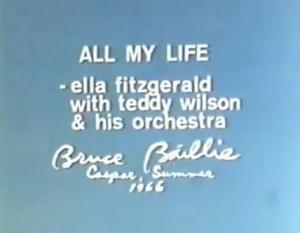













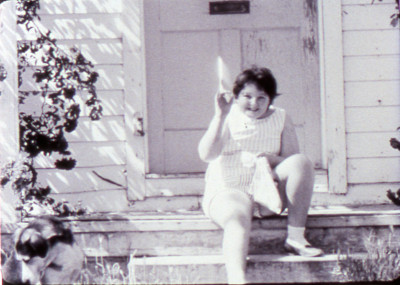
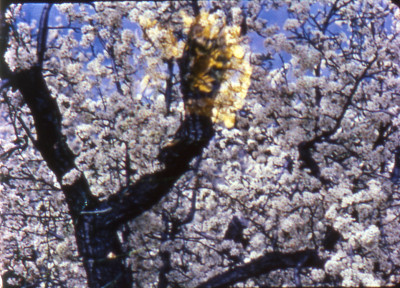



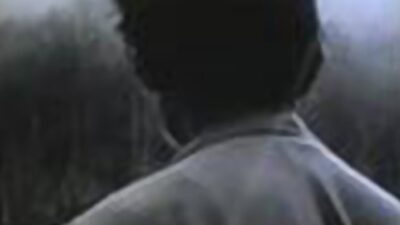
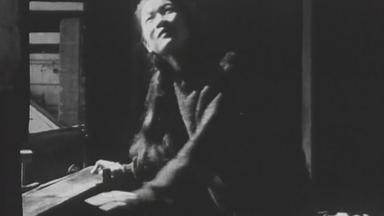
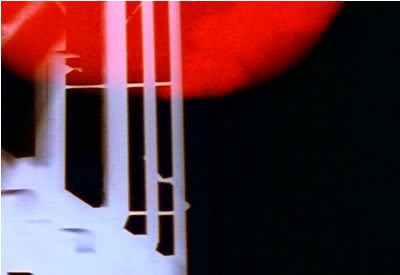


















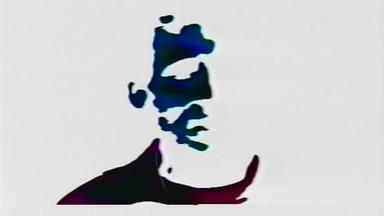









____
Further
Bruce Baillie Official Website
BB @ IMDb
Canyon Cinema
BB’s films on Fandor
BB @ The Lux Collection
‘Master filmmaker Bruce Baillie’s lifelong search for beauty in all its forms’
Bruce Baillie Project @ Kickstarter
‘On Bruce Baillie’s fims’, by Michael E. Grost
Bruce Baillie Archives @ Stanford University
Bruce Baillie’s films @ MUBI
‘New Video Masters Available!!’
‘Communal Filmmaking: Bruce Baillie’s Work Still Inspires’
‘Un cinema che in-canta: Bruce Baillie’
Ed Halter on Bruce Baillie @ Artforum
‘Bay Area Bonus Tracks and B-Sides’
‘Bruce Baillie enseñó la verdadera vanguardia a Hollywood’
‘Bruce Baillie: The Innovative Filmmaker’
‘VISIONARY FILMMAKER BRUCE BAILLIE’
‘City Poet Bruce Baillie Returns’
‘Commute by Bruce Baillie’
‘Honoring an American Titan of 20th-Century Experimental Cinema’
‘The Films of Bruce Baillie’, by Harriet Polt
‘Bruce Baillie’s Songs of Everything’, by Chuck Stephens
‘Exploded View | Valentin de las Sierras / The Last Movie’, by Chuck Stephens
‘Exploded View | Serene Velocity / World on a Wire’, by Chuck Stephens
___
Extras
Bruce Baillie: Cinema of Senses Trailer – The Light & Sound Machine
Screening Room with Bruce Baillie – PREVIEW
Bruce Baillie & P. Adams Sitney | Art of the Real
THIS KIND OF THING-HE AND US: A Portrait of Bruce Baillie
______
Interview
from Flicker Alley
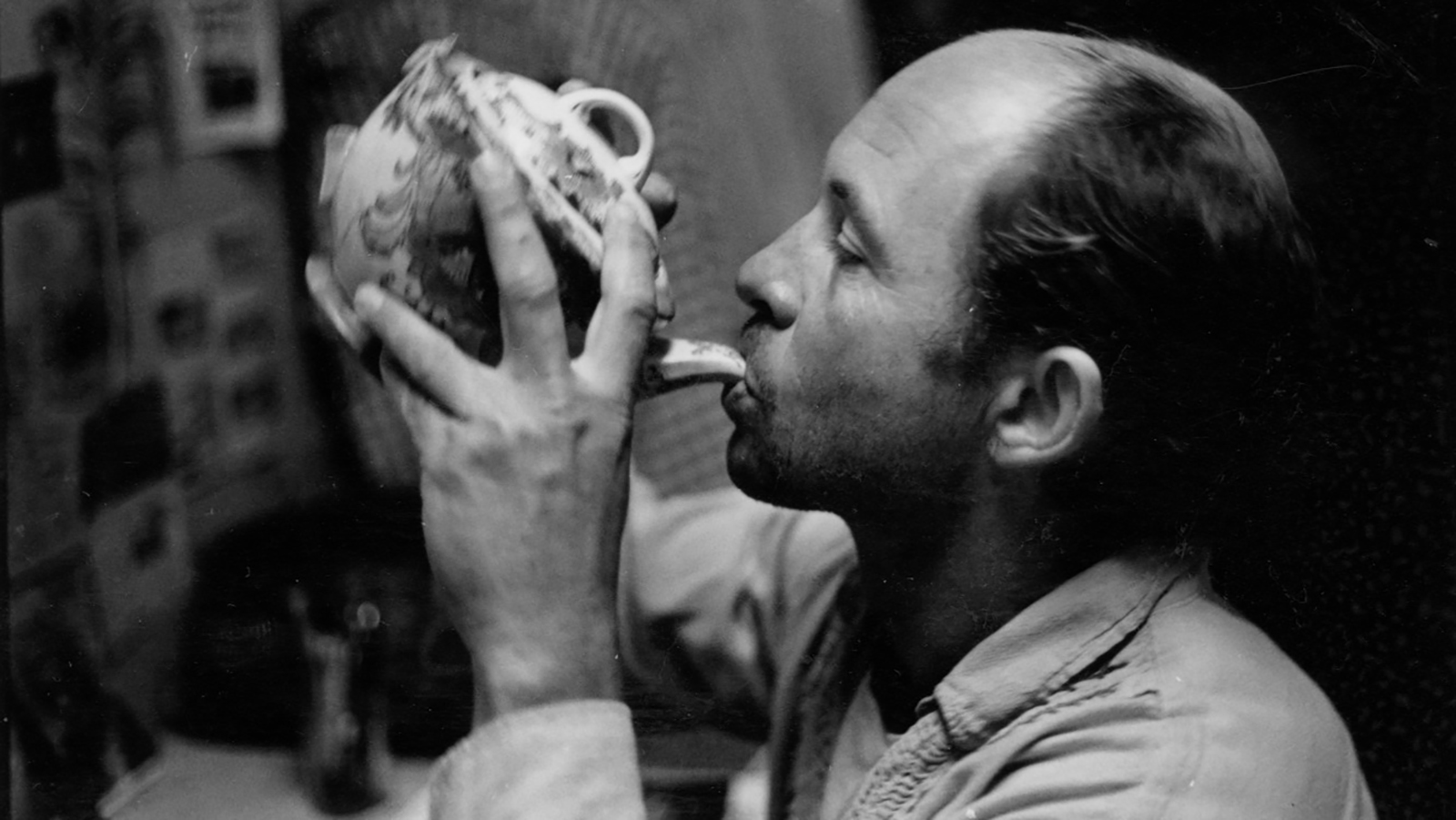
Flicker Alley: Your films, including Castro Street, are often named “poetic documentary” and have their style have likened to that of Dziga Vertov and other Soviet montage filmmakers. Were you consciously drawing from these sources as inspiration for Castro Street?
Bruce Baillie: You can erase all the cinematic references. I’ll see if there’s anything that’s a precursor in my mind, perhaps in the music world.
I played an Indian raag, traditional Indian instrumental music. The song I happened to be playing during the editing process [for Castro Street] was noted for its basic male-female dialogue. That was the nature of that music, and I knew that. I was fully conscious of that, and I wanted to implant that essence in my editing.
What did inspire you to create the piece then?
I had a job working in the oil fields for PG&E; [Pacific Gas and Electric]. They put me out in the oil fields with a huge shovel. I was in great shape then. There were three of us. They put me out there because I had already put in my notice to quit because I was working to get money to go to Europe.
I was driving my old Volkswagen between Berkeley and the oil fields in Richmond, CA with this job, and I remember the weather was such that there was kind of a rainy, flat sort of light that made all these pipes in the standard oil field stand out with a certain magnificence. The greens and the reds and so on.
Was it in that moment of seeing the rain that you decided to film it?
Exactly. That was the moment. I took the moment home to Berkeley in my head and immediately began to collect various items of my mother’s, glasses and the kinds of stuff you see in a person’s kitchen. Things you would see that would alter the imagery that I was planning to shoot. I was planning to shoot railroad switching yards that were adjacent to the refinery.
I came home with the impression of the colors and also assigning the film stock to it. I thought, “What about this old Ansco color that’s sitting around?” Nobody had any, and I claimed that it was the last role of Ansco color in the world. I had several rolls that I used in several films. It’s probably too bad that I used that instead of newer kind, but I didn’t have any money in those days. Canyon members used to buy me a hamburger. Poverty is an essential player in this recollection. I would add as a note to the film, “The filmmaker states that this is all made by hand, no computers, with a few dollars.”
In filmmaking, in the field, there is some kind of subject matter. You’re out in the field, and you’re collecting imagery and the sound perhaps. That may be a major period. In major movie-making that would be “production.” I recorded audio with an Uher recorder that records at 3 different speeds, thus 3 different octaves. I had gathered all the material in the field, which was in Richmond, CA, a funny little place; it’s mostly oil fields.
What was your editing process for Castro Street like?
What does [Stan] Brakhage call editing? Composing.
I prefer Brakhage’s term; it’s much more truthful about what we did.
The editing in that film is quite complicated, in the old way of editing film, non-electronic and non-programmed. It’s obviously a complicated film to make by hand.
I assigned a male aspect to one and a female aspect to the other. Then I listened to this [Indian raag] music to influence me thusly in the great universal spirit of the genders that make up our life. The two genders and their opposition and their composition, the “yin and yang” of the Chinese, and so on.
There I was at the very essence of composing that work, working in the absolutely unknown, more difficult than anything I’ve ever done. I was up at Lou Gottlieb’s Morning Star Ranch, near Golden Gate, which is another stellar aspect of that era. I had to borrow one projector, and I had one projector from Canyon [Cinema]. I was deliberately listening to [this Indian raag] over and over, day after day, as I edited in this little shed that I had immaculately cleaned. I reported to [cleaning] duty there every day after I had worked on my film.
It was in the exhausting, highly-concentrated composing of that work that I apparently set off the medical situation, combined with environmental toxicity & hepatitis, which daily affects my life.
You are a big proponent for the exhibition and distribution of independent and avant-garde films. Not only are you an artist in your own right, but you are also a steward of other filmmakers. What was the impetus to expand the scope of your career from filmmaker to curator and distributor, founding Canyon Cinema in 1961?
The question was posed early on by Stan Brakhage and his then-wife, Jane. They had moved to San Francisco for a short period of time. Chickie [Mildred “Chick” Strand] at the time was working with me as a co-operator. I started Canyon Cinema in Canyon, then moved and met Chickie in Berkeley and we operated it together.
Jane and Stan asked us why did we do this. I came over to their apartment for dinner. I had in the back of my mind to ask if I could borrow his camera. (I never had any equipment – I remember being in tears, sobbing in Berkeley, wondering how am I going to do this. Stan said “Well, Bruce, yes, I can loan you my camera, but if I loan it, I never want to see it again. Because that’s how I am. I don’t loan my camera, but I do give it away.” I, of course, turned him down.)
I could tell they were ready to pop the question: Why in the hell, Bruce, are you taking this on? It’s hard enough to make films on no money, with no resources.
I remember saying, “Somebody had to do it,” which is an old answer from films. But in this case, it was generating some positive issue, societal and general and civilizational. Somebody might say in a neighborhood, “Why did you take it upon to pick up all the litter? Why did you take it upon yourself to shout at all the speeders?”
So that was my answer.
How did I think about it prior to that moment? I had said to myself, look at the field. I thought, simply put, if I’m going to make films, I have to show them somewhere. That very terse objective statement was in my brain 60 years ago.
If I’m going to show films, where am I going to show them? There was no theater, no venue. That’s when the history of Canyon Cinema kicks in. I started looking at the Canadian Embassy and some French films. And then some guy in New York had made a film and that was the biggest thing in the world. Then Chickie and I had a San Francisco and a Berkley show each week, two shows a week.
We’re still trying to collect films. There’s a woman from Mexico that is coming here today. They’re doing a biography of my life. They’re going to do a big retrospective in January.
Moving forward from San Francisco the 1960s, how do you think the art scene has evolved today?
Talking to up and comers today, I often say that they should be aware that it’s not cute. It’s not fun, in a lot of ways, but sometimes there is such a great joy in being able to recognize something that’s created, like a mother with her little babies: look what I’ve made.
But I do warn people.
[Stan] Brakhage had a series of lectures at the University of Chicago, I think, and I was giving a show nearby. He was in the same motel by chance. (I didn’t know him too well at the time, and he turned me onto Johnny Carson. I thought Johnny Carson was kind of a phoney-baloney. I met Brakhage in the hotel lobby and said, well, I’ll take a look at it, too. From then on, i was a Johnny Carson fan.) Later, I went down to hear Brakhage lecture. He was talking about a theme that he’s also written and probably repeated as well to parents: Don’t turn your children toward poecy. Don’t let them become filmmakers. Don’t let them write poems. Have them become mailmen.
Why? Because of the financial hardships inherent to filmmaking?
No, because it’s impossible. Financing is only part of it. It’s as impossible as all the impossible challenges in the past of mankind. Think of the Spartans who were going to meet the Persians. There were, what? 40 Spartans and 40,000 Persian soldiers. It was impossible, but they found their spot anyway.
Heroic really means humanity overcoming the obstacles of living on this planet. I mean, it’s impossible to even get through the traffic from here to the next city.
What you’re currently working on? Do you have a final project in mind?
It’s a good question. I have to wonder myself. Sometimes I compare my own lifeline to that of Jack London, as an example of an artist or creative writer and how he had just written what he had had to write, and then he was still around. In his last novel, he portrayed himself, or perhaps betrayed himself, and had his protagonist go out to sea one last time, then leap over at the end because he had done his duty. It’s not that for me because I have a family, a really good family, and it’s a lifesaver.
I have been working on one piece that is called in English Memoirs of an Angel and it’s subtitled “Remembering Life.” Isn’t that intriguing? I’ve had sufficient time to come up with the right thing to say. I have voluminous notes, a huge folder, that began about 20 years ago. I had to do it on video because it’s the only camera I had at the time. I haven’t the money for film, and I don’t really have the energy to do the heavy kind of energy that I love to do.
In French, the title is Les Mémoires d’un Ange. Partly why I’m using French is because I’ve been doing several video pieces that are of less importance. In later years, simplifying becomes the code and issue of the artist’s pallet. It’s apparently part of nature, and I’ve observed this about myself, in my preferences and tendencies. I also don’t have the energy to make an enormous film. I’ve made several little films, some are on my YouTube site. Part 1 of Memoirs of an Angel is on there. It’s meant to be 3 parts. There is also an entr’acte – the intermission – which is one of my best pieces of work. It runs about 10 minutes and is in there.
That is one thing that is in the works. I don’t know if I’ll ever finish it. It’s only video, and I hoped that it would be able to be transferred to 35 mm, but not HD. Some of it is found material, kind of like Bruce Connors’ work, newsreels. I do a whole part on the World War II era because that’s when I was born. As a substitute for not making these creative films, my mind comes up with creative jargon. I like to speak publicly. My creative side gets a release.
I have a project called Les Papiers (The Papers). It alludes to when Stanford came and picked up my papers a few years ago. I recorded it, and I have some very nice footage of the locker where I had stored 34 boxes of this personal archivery. I decided to do it all in French. I had been listening to the Saturday French-Canadian broadcasting, listening to old music like Edith Piaf, and I’d record it. It will show letters that are now in Stanford’s collection. I shot a letter from Will Handle. He’s one of the most wonderful filmmakers of the ‘60s. He and I used to work together a lot. I would just do chores for him and work through tapes. We worked for CBS together for a while running up and down the coast. There’s a letter from Chick Strand from Mexico. A lot of letters from Stan Brakhage. Right now I’m talking with the new director of the Brakhage center about papers from him.
I’m also doing some preservational work. I have lots of notes.
I am going to propose to a foundation soon something called the Holy Scrolls which is an idea, a title given by our old friend Paul Arthur, a film critic and professor at Bard College. It is a collection of 11 hours of excerpts of all the unfinished films that I’ve worked on in the past years. I’ve cut it together. It’s work print all spliced together, that I spliced together in this very room. We have one that is entitled The Cardinal’s Visit that is the last film that I shot in the ‘80s. Holy Scrolls is awaiting digitization as soon as can get financing.
I have all kinds of audio and video tapes lying about me, in front of my eyes, in the works.
_______________
16 of Bruce Baillie’s 36 films
___________
On Sundays (1961)
‘On Sundays is a cryptic, highly individual portrait of one woman (Jean Wong) and a city (San Francisco), capturing facets of womanhood and San Francisco that aren’t seen in Hollywood films. Baillie’s movies find secret histories, ones rendered obscure or ignored, and bring them to light. Sure, On Sundays follows Wong through well trod famous sights and settings, such as Union Square and the cable cars at Powell and Market. But even there, with seeming offhand ease, Baillie lands upon Weegee-like indelible shots — such as an almost hallucinatory look at endless rows of men on benches — rather than prosaic postcard images. When Wong treks SF’s natural vistas, Baillie is there to record it all with similarly awesome clarity. From mountaintop to skid row, he brings the same sharpness to visions of nature and architecture, even when the latter is disused and strewn with grafitti (shades of Weldon Kees’ 1952 Bay Area-set film Hotel Apex, but a huge improvement). At times, Wong seems to flit forward in tandem with the grinding of gears on the soundtrack. At other moments, the melodic music on On Sundays’ soundtrack seems to blow in tandem with wind-gust imagery.’ — SF360
the entire film
_____________
Mr. Hayashi (1961)
‘Bruce Baillie’s Mr. Hayashi might be thought of as a putative East Coast story transformed by a West Coast sensibility. The narrative, slight as it is, mounts a social critique of sorts, involving the difficulty the title character, a Japanese gardener, has finding work that pays adequately. But the beauty of Baillie’s black-and-white photography, the misty lusciousness of the landscapes he chooses to photograph, and the powerful silence of Mr. Hayashi’s figure within them make the viewer forget all about economics and ethnicity. The shots remind us of Sung scrolls of fields and mountain peaks, where the human figure is dwarfed in the middle distance. Rather than a study of unemployment, the film becomes a study of nested layers of stillness and serenity.’ — Letterboxd
the entire film
_____________
Here I Am (1962)
‘Bruce Baillie’s lyrical portrait of an Oakland school for emotionally disturbed children regards the world of the classroom with open curiosity. His camera thrives on the unpredictable movement of students and fog; every new composition is a new window unto the school space. This impressionistic style realizes many small epiphanies of play and private reverie. A soundtrack of bird-song and cello only deepens the quietude. Though filmed in a style akin to cinéma-verité, HERE I AM flows as a poem.’ — Fandor
the entire film
_____________
To Parsifal (1963)
‘It’s difficult to say exactly where or how To Parsifal is a lyric film and where or how a narrative work. For this reason, ordinary critical vocabularies (based on certain “types” of films) do not apply with much usefulness to Bruce Baillie’s abstractly assembled color images, nor to the nature and functions of his sound track. To get a sense of how this film works it will be necessary first to break it down, outline it, in order to see how the (implied) viewer puts it together. The 16-minute film falls neatly into two nearly equal parts, separated by fades to and from black. Part one depicts a sunrise, a journey out to sea in a boat, then gulls flying around the boat while fish are cleaned, and finally the journey back and the reappearance of land. This is, narratively, a reasonably clear presentation of a fishing voyage; the only strange thing, informationally, is the absence of human beings (except for the hands seen cleaning fish). In part two the setting changes from sea and coastline to a mountain forest traversed by railroad tracks. Workmen are seen repairing the tracks, after which a train passes through the forest while a nude woman stands nearby. The woman washes herself in a stream as insects move on ground and water. Then the workmen are again seen repairing the tracks; a train appears and a man’s hand pulls the woman away from the camera as the train continues through the forest, illuminated by a setting sun. The two parts function as one larger unit by similar patterns of development and by a strong sense of temporal progression. Part one begins at sunrise and seems to end during the afternoon. The second part begins at some time in the morning and ends with a sunset. Whether we are to take the film as occurring during a single day or during two days seems beside the point; the work has an almost mythic sense of time. As the beginning of part one and the end of part two are connected by the presence of the sun, the end of the first part and the beginning of the second are connected by the presence of mist (subtly underlined by the foghorn on the sound track during the darkness which separates the two units). Both parts exhibit a circular (symmetrical) construction which also contributes to the mythic—ritualistic—aspects of the work. This is most striking in the ABA movements of the fishing voyage: land to water to land again—voyage out, fish and gulls, voyage back. There is another large ABA structure at work in part one, not specifically connected with the story as such (though it contributes to the overall formal structure). This is the alternation on the sound track between music and “natural” sounds. The film begins with a coast-guard weather report, recorded (seemingly) on the boat. This continues to the fourth shot of the film, where it slowly fades out as music fades in—an excerpt from Wagner’s Prelude to Parsifal . This music continues almost until the end of part one, when foghorns and boat noises are heard, continuing through to the dark screen which divides the work.’ — Alan Williams
the entire film
______________
Mass for the Dakota Sioux (1964)
‘”No chance for me to live, Mother, you might as well mourn.” Sitting Bull, Hunkpapa Sioux Chief. Applause for a lone figure dying on the street. INTROIT. A long, lightly exposed section composed in the camera. KYRIE. A motorcyclist crossing the San Francisco Bridge accompanied by the sound of Gregorian chant, recorded at the Trappist Monastery in Vina, California. The sounds of the “mass” rise and fall throughout. GLORIA. The sound of a siren and a short sequence of a ’33 Cadillac proceeding over the Bay Bridge and disappearing into a tunnel. The final section of the Communion begins with the OFFERTORY in a procession of lights and figures to the second chant. The anonymous figure from the introduction is discovered again, dead on the pavement. The body is consecrated and taken away past an indifferent, isolated people, accompanied by the final chant. The Mass is traditionally a celebration of Life; thus the contradiction between the form of the Mass and the theme of Death. The dedication is to the religious people who were destroyed by the civilization which evolved the Mass.’ — Fandor
__________
Quixote (1965)
‘The bearded figure at the beginning of Quixote resembles Walt Whitman and the great poet’s influence is palpable in Bruce Baillie’s kaleidoscopic convocation of midcentury America, an under-acknowledged masterpiece of 1960s cinema. Quixote describes a journey across the land and soul of a divided land with the same melancholic wanderlust that infused Jack Kerouac’s On the Road and Robert Frank’s The Americans. Four distinct movements collect a litany of highway signs, Mexican farmhands, desert tarantulas, skyscrapers, high school basketball players, Indian reservations, old time religion, circus acrobats, antiwar demonstrators, wild horses, tycoons, supermarkets, comic books, jazz and the Vietnam War. The land is primary, though its meaning is held suspended in Baillie’s s swooning camera movements and preternatural optical effects. Praised as “the greatest American film you’ve never seen” by critic Chuck Stephens, Quixote remains an entirely unique atlas of the country’s spiritual currents.’ — Max Goldberg, Fandor
the entire film
_______
Tung (1966)
‘Psychedelic colors distort the figure of a woman in era-revealing attire, allowing you the chance to see the beauty not of the woman but of the apparent meaning she has for the filmmaker, as he wraps her in color and tries to destroy the mundane visions of her in favor of revealing what more is there.’ — Letterboxd
the entire film
_____________
Little Girl (1966)
‘This film by Bruce Baillie, completed in 1966 but unreleased until 2014, is contemporaneous with Castro Street, but is much more formally connected to All My Life or Still Life, also from the same year. In three sections with three different formal strategies, Baillie shares distilled moments of found natural beauty as he encountered them in the North Bay outside San Francisco. The first section features a study of plum blossoms, rendered in rich, multiple superimpositions that allow the white flowers to explode into a blizzard of visual complexity, framed by a panning shot of purple mountains. In the second section, Baillie allows us a furtive glimpse of the titular little girl, waving to cars with her dog on the side of the road, lost in her world and thoughts. Bruce’s framing remains unadorned, feeling no need to add to or take away from a beautiful piece of simple portraiture. The third section, of waterbugs on the surface of a pond, remind us how remarkable and sensitive Baillie’s camerawork can be, as he observes their graceful dances, and the subtle light and water effects they produce by their movements.’ – Mark Toscano
the entire film
___________
Castro Street (1966)
‘This is Baillie’s most famous film, which regrettably isn’t saying as much as it should, since his immeasurable influence has yet to yield the wider recognition accorded to other avant-garde masters. When I’ve seen this film projected publicly, the person introducing the program unfailingly stipulates that Baillie is not depicting San Francisco’s Castro Street, but rather an industrial byway in Richmond, out near the Chevron refinery. This confusion is one of those tricks of history; the very words of the title connote the unofficial headquarters of gay and lesbian culture in the U.S., while the film is ostensibly more neutral in its geography. But what can we see in Baillie’s film nearly forty years on? While these Castro Streets are inevitably distinct, how does the film bridge their gaps in our mind? Baillie has said that he conceived of the meshing structure of the film (a right-to-left pan in color, blended with a left-to-right movements in black-and-white) as an analogue to “masculine” and “feminine” principles coming together. [See Scott MacDonald’s interview with Baillie in A Critical Cinema 2 (Berkeley: University of California Press, 1992] This union is equally evident in the soundtrack, a collage of rumbling train sounds, gentle whistles, and pop radio. And even within the “masculine” passages of railroad space, Baillie lavishes a beautifying gaze on those conductors and brakemen. Outlying suburban spaces transcend their commercial utility. Grimy trackside labor becomes luminous. I am not trying to enfold Baillie’s film into a different history via an against-the-grain “queer reading,” but I am proposing that Baillie’s lasting achievement (in this and all his films) is his attention to the living surfaces of the physical world, the way he allows them to disclose themselves. The images of male beauty Baillie generates do not necessarily reveal desire, but a perceiver not as capable as Baillie of embracing the whole of the world might actively disavow that beauty, or merely pass it over in silence. As he did with his marvelous single-shot film All My Life from the same year, Baillie asks his audience to attend to the scenes unfolding before the camera as occasions for meditative contemplation of the rhythmic interplay of human and natural forces, the radiant beauty found in the humblest of places. Sometimes, good fences make great landscapes.’ — academichack
the entire film
_____________
All My Life (1966)
‘I can’t say that the prospect of a 3-minute leftwards pan was appealing to me, but I actually found All My Life (1966) quite relaxing. A filmmaker should never underestimate the power of a well-chosen soundtrack, and Ella Fitzgerald’s “All My Life” works perfectly, evoking a simpler time and place. I don’t see any reason why a backyard fence, examined from right-to-left, should be nostalgic in any way, but it is. The camera follows along the length of the fence, sometimes tilting upwards to take into account the bushes, and ends the film by rising up into the sky, passing a telephone wire and losing itself in the emptiness of the blue overhead. Aside from the camera movements, there’s no action and no story. Just a fence, that music, and the memory of a childhood you’d forgotten.’ — Short Cuts
the entire film
_____________
Valentin de las Sierras (1971)
‘The exquisite Valentin de las Sierras, Baillie’s ten-minute 1967 masterpiece—one of a series of extraordinary films (Quixote, 1965; Castro Street, 1966; Quick Billy, 1970) he made during the ‘60s—is structured around a well-known Mexican corrido about a man who may have been a martyr, or may have been a traitor; one way or another, life caught up with Valentin in the mountains of Mexico, and he was hanged. The warp and weft of Baillie’s film similarly contemplates celebration and hardship in those rugged, unforgiving mountains, intimately, prismatically tangling life and death in rare air and sunlight of liquid gold. Filmed in Chapala on a few rolls of Kodachrome the filmmaker bought in Guadalajara, and assembled between 1966 and 1967, Valentin de las Sierras is built of glistening, luminous abstractions and glorious, teeming sonic clamour. Baillie had begun making films in the ‘50s; in 1961, at a series of outdoor screenings behind his house in Canyon, California, he founded what would become Canyon Cinema, the San Francisco-based distribution cooperative for experimental cinema that—though currently financially imperilled, its future far from certain—remains at the heart of America’s truly independent filmmaking to this day. Valentin is the work of a mature and towering American artist, still woefully undervalued, working at the very summit of his abilities.’ — Cinema Scope
the entire film
_____________
Roslyn Romance (1977)
‘Not long after completing QUICK BILLY, Canyon Cinema co-founder Bruce Baillie disappeared from the Bay Area and ventured north to the state of Washington. First to Roslyn where he completed the extraordinary ROSLYN ROMANCE. Then to Camano Island, Baillie’s home ever since. In his own words, ROSLYN ROMANCE “seems to be a sort of manual, concerning all the stuff of the cycle of life, from the most detailed mundanery to… God knows.” The complete film is contained within the elusive HOLY SCROLLS. Therein, this is said to be merely the first and second parts of a larger work (yet absolutely remarkable in its present form).’ — Fandor
the entire film
_____________
The P-38 Pilot (1990)
‘“For the dispossessed, the excluded, the condemned, fallen from life and loving.” These words are typed across the screen at the outset of THE P-38 PILOT, Bruce Baillie’s experimental video portrait of a former pilot outraged by old age and bitter with regrets. We hear the man’s disputatious monologue on the soundtrack: “I’m not the kind of guy to end up in a slime pit… I can’t understand it, see?” Baillie, an established master of 16mm cinematography, uses the video medium to search the man’s confined space for rustling movements and leaking colors. Chet Baker sings “There Will Never Be Another You” as the filmmaker bids the pilot a peaceful adieu.’ — Letterboxd
the entire film
___________
Introduction to the Holy Scrolls (1998)
‘THE HOLY SCROLLS was an eleven hour assemblage of Bruce Baillie’s extraordinary later work, including the complete ROSLYN ROMANCE along with DAY ASHORE, THE CARDINAL’S VISIT and an assortment of other pieces (finished and unfinished) or, as Baillie himself described it, “hitherto unseen films” made since QUICK BILLY nearly two decades earlier: “semi-edited, silent, spliced, prepared for a few special showings.” THE HOLY SCROLLS, then, was more of an event than a film. Ideally, the individual shorts will surface independently at some point. Meanwhile, we have the INTRODUCTION TO THE HOLY SCROLLS, completed in February 1998, an “introductory video with author commenting on films, video inserts from more recent life, family, etc.”‘ — Fandor
the entire film
_______
Pieta (1998)
‘Commissioned as the trailer for the 1998 Viennale. These scenes are a one-minute, condensed version of the conclusion to my last work, MEMOIRS OF AN ANGEL. The scene of children was shot in the Philippines, including my daughter, Wind Baillie. The birds, near our home in Washington State. The concluding Pietà, with my wife Lorie and son, Keith-Kenneth, was recorded at the beach here [on Camano Island]. All the last light of day.’ — Bruce Baillie
the entire film
________
Salute (2014)
‘SALUTE, the first installment of Bruce Baillie’s proposed three-part final film, MEMOIRS OF AN ANGEL, chronicles (in collage form) the legendary filmmaker’s time in the Navy and beyond. The subsequent installments, NIGHT and LIGHT, are still works-in-progress.’ — Fandor
the entire film
*
p.s. Hey. ** jay, Hi. Uh, I guess I mostly read sitting in the old fashioned way. Sometimes lying in bed on my stomach. I guess that’s it? Hm. Cornwall, never been there, but the name does conjure up an instantaneously beautiful mental image. But, yeah, I guess I think of it as a landscape not as a town, I don’t know why. Odd. But if it’s like a ghost town, that’s pretty to imagine if not to reside in. Yeah, Miike is great. And so prolific. It’d take a lifetime to catch up on his stuff. I actually tried to make a blog Day about him, but his oeuvre is so vast that I gave up. See you too! ** kier, Hey! Morning, yes, 9:05 AM to be precise. I read a lot on trains. I can’t read on planes for some reason, I don’t know why. Well, I can read magazines in flight. I think about bringing a book on the metro, but I like looking at everyone too much. I can send you a pdf of ‘Flunker’ if you want. Fanon’s great. I don’t think I’ve read that one though. My ear suddenly started improving yesterday as soon as I stopped putting the antibiotic drops in it, so now I’m holding out a little longer, but, yeah, the doc is probably inevitable. We’re still early on with the new film, working on an early draft of the script. I’m dying to get that finished so we can start the awful but necessary grant application phase. Home aquariums, right gotcha. Yeah, they’re nice. When I was a teen, one of my friends’ fathers had replaced a lot of the walls in their house with giant, wall-like aquariums. It was trippy. The house smelled kind of yuck though. We’re working to do the last minor special effects on the film right now. That and adding the credits at the beginning and end are all it needs. It should be finished by the end of this month. We’d love to do screening in Oslo! I would imagine that’s the only way it would ever get to play there. Baked cookies! Ooh. I made the blog’s first Halloween post yesterday, so that felt good. I support you making a miniature playpen. Strongly. xo, me. ** _Black_Acrylic, That reading chair sounds so nice. I should get one. Hm. Today is PT day, it’s all scheduled, and my ear is even semi-unclogged! ** Måns BT, It has been a while, sir. Howdy! Oh, sure, I think ‘Jeanne Dielman’ is great. It’s so curious that critics picked it as the best film of all time, but it’s such a curious choice that, yeah, why not. I love Akerman’s films in general. She’s a big influence on my filmmaking partner Zac. Sobriety’s cool. I used to be a serious druggie, but then I figured out that the fully working brain is the best drug, it’s just a whole lot more subtle than the chemical kinds. And there you go: being sober paid off. Obviously all the luck on the twin Cupid plan. I’ll add crossed fingers to my kneeling routine. You’re practically half-owner of my body at this point. Okay, I’ll try to remain knelt for as long as I can. Numb knees feel interesting, luckily. I’ll see if I can find other Astrid Lindgren books in English here. The English language bookstore near me has a big Children’s section, so maybe. My last couple of days have been kind of rough. Trying to solve the huge film debt/mess, and not having much success. But the rest of the week looks okay. I’m seeing a program of experimental films tonight including one by Hollis Frampton — one of my two all-time favorite filmmakers (w/ Bresson) — that I’ve never seen. And other potentially okay stiff. How’s the second half of your week appearing to be? xo, moi. ** HaRpEr in Blogland, Hi. When I try to write about my work, I never feel like I learn anything, I just feel like I’m dumbing my work down, but when I talk about my work with someone, I learn tons. Which makes total sense, I think. Yeah, agreed, precisely, about ‘The Counterfeiters’. Ultra-best luck with the possible new room visitation today. How did that go? ** Bill, Berlin! Wow, for fun or work or what? You’re so almost nearby. What’s happening over there? Gisele has a big show of her dolls and photos and stuff opening at some museum there, but not for another ten days, I think. The Captcha seemed to work, thank god. I’m trying to get WordPress to disable it. We’ll see. ** Jacob, Hey, hey, Jacob! Oh, no: your heat. We just hit fall here finally, and it’s fucking bliss. Hang in there. Blanchot is my favorite writer, so, yeah, glad you liked ‘Thomas …’. His ‘Death Sentence’ is my all-time favorite novel, so obviously I direct you there. Big congrats on the research position. Sounds totally fascinating to me. I have been on the cusp/cliff-edge of restarting my game playing addiction for months and months, and, when I do, I’ll find ‘Judero’. Thank you! Huh, I did a blog post about Mississippi River Basin Model, I think. Hold on. Oh, no, I didn’t, but I had it in a post about Scale Models. I’m kind of obsessed with scale models. Anyway, if you have a similar interest, the Mississippi River Basin Model is down in the lower reaches of this post, but it’s just a tidbit. ** Joe, No, thank you Well, we’ll still need to fundraise, but for a bunch less money, at least. See what you think about ‘In Cold Blood’. I haven’t read it in ages, but I think I thought it was Capote’s best by quite a ways. Take care, bud. ** Okay. My guess is that a lot of you don’t know Bruce Baillie’s terrific films. And apparently I thought that you should have an opportunity to make their acquaintance and see what you think. Thus, today. See you tomorrow.
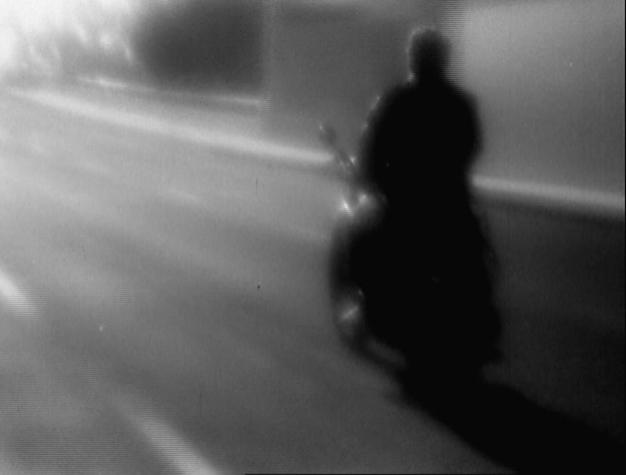




 Now available in North America
Now available in North America 
Hey Dennis,
Reporting back from the Water from Your Eyes gig. They seemed to play as more of a noisy rock band than they are on their records. Like the pop/electronic element was toned down. It was ok but I did find myself getting a little bored. That said, I was in a bit of a glum misanthropic mood so who knows, maybe I was kind of closed off. Hope you’re doing ok.
James
Yeah, the countryside of Cornwall is really lovely, the city is a little deprived though unfortunately. It’s got a combination of hugely inflated house prices and basically zero jobs that always make a city a little nasty, it’s got some really nice areas but they’re sort of overshadowed by some fuckugly mansions that are barely occupied. We (me and 3 other guys) did end up moving in like, a minute’s walk from a big cruising spot too, which has been sort of amusing, I guess.
Mmm, I know what you mean about Miike, there is so so much. I think I’ve seen the majority of his famous ones, but they’re always at least somewhat interesting. I think he adapted a guro manga I quite liked into a miniseries, the one about factory-farmed serial killers, so that’s next on my list.
Hmm, other than that there’s not much going on. I’m in a sort of mildly dire situation at the moment, cos my bank account got hacked and my rent for the next 3 months is gone, but I’m not super cut up about it, I’m probably just gonna go to the bank sometime. Cornwall does have a weirdly big sex trade too, so there’s always that as a safety net.
Uhh, I think I had one other thing to say, but I’ve sort of forgotten. Oh, I was actually just rereading 120 Days, and I was curious if the narrator in Marbled Swarm was intended as a sort of analogue to Julie, in terms of being a victim-turned-libertine. Anyway, see ya!
Bruce Baillie is new to me but going by these texts and a few clips of his films, I can definitely see the guy’s immense value. There is something idealistic at the root of his practice that I do feel a measure of sympathy with.
Hey. When comes to Capote Other Voices, Other Rooms I loved it very much when I was younger that I can’t read it again because I don’t know what I will think now. This kind of novel about youth I feel speaks to a younger me
Flunker arrived today At last and went to the park to read it but went to the park but I could not concentrate at all and just did walks feeling excited. Thoughts coming soon
The counterfeiters is absolutely one of my favourite books. I have it both in English and Greek and want to buy another edition I think the American one because I like the cover.
I used to carry it with me everywhere for some years especially had fixation to read it on the way to the airport and from the airport back home because I have obsession with those specific routes
Love from Chania
Hello. The room viewing went terribly if it even ‘went’ at all. It all happened in the space of two minutes. Anyway, it’s not going to be my room. I really don’t know what I’m going to do, it shouldn’t be this difficult to rent a room. All I’m thinking about right now is about how I can get out of here as quickly as possible. If I have to stay with my parents during the start of the first semester and take a ridiculously long commute everyday I would really lose it. Anyway, I’m getting worked up even talking about this so I should probably stop. I have thousands of unpleasant things to say about people I know but I should probably avoid going down that route. Everything will sort itself out, it’s just time.
But damn, I think my emotions are apparently going to go crazy because I am starting hormones tomorrow. It feels like an inconvenient time but I have been waiting for years. To put it plainly, I’m going to go through a second puberty, but I’m sure the mood swings won’t be anything worse than what I’ve felt in the past few months. I had this fantasy about going back to classes and looking like a completely different person and my friends not recognising me like a cheesy 80s high school flick, but that obviously isn’t going to happen. I do look different though, but I couldn’t say how.
I’ve finally got around to reading John Barth. I couldn’t decide if I wanted to start with ‘The Sot Weed Factor’ or ‘Giles Goat Boy’ but decided on the former. I’m finding it to be very funny, so I picked up the right book for the moment. It’ll be interesting to see as I read on if it becomes more conventional or experimental because I can’t tell yet. I’ve heard you say before that a lot of American postmodern writers didn’t go far enough in their experiments. I think that’s because a lot of them were still hung up on the idea of the great American novel and were still in love with a lot of traditionalist ideas about writing. I think a lot of the metafiction stuff was kind of nerdy, writers writing about books because they love books rather than out of wanting to create a new form. Anyway, I’m interested to see where Barth fits into all of this.
Hm, so, they (library) have a real chunky beast of a Blanchot reader that promises to have *all* his major works, in English. I’ve been toting the lithe ‘Thomas’ around in my bag, and I really dread replacing it with such a tome. But I shall, maybe. How did you first find Blanchot? I think I started all my impressionable literary intrigues via Wikipedia. We’re past the worst of it: the high is only 85 F now. It gets fucking frigid at night, too. The weather will cool down this weekend, just in time for William’s Lady Gaga costume birthday party. He’s set up a form so that there are no duplicates. I’ll report back on that. Wow, about the blog post. Very nice. I guess I like scale models an unusual amount. I like going to our architecture school and looking at all the model projects. Some shit official ones are in most of our buildings, but we have a display case containing a Lego construction of my department’s building, which I find nice. It’s pretty simple, though. I just like Lego. We also have, apparently, at least 300 century-old geometric topology models scattered around our campus. I’ve seen maybe 50. The Mississippi River Basin Model seems like kind of a big deal, in engineer world. I didn’t realize that it was actually used it for hydraulics simulations. Another casualty of computers. What’s so interesting about scale models for you? I’m pretty interested in what people choose to represent, to leave out, etc. Oh, I heard in, I think, an interview you did with Christopher Zeischegg a month ago that you’re sort of down on Salò since, if I recall right, it visualizes certain vulgar acts and consequently makes them silly. Could you maybe elaborate a little on what goes wrong in Salò? I fairly liked it on my first watch, but several people I was watching it with (myself included) noted this campy, unreal element, rearing its head first at the end of that wedding scene, that sort of metastasized all over the film until maybe the final scene.